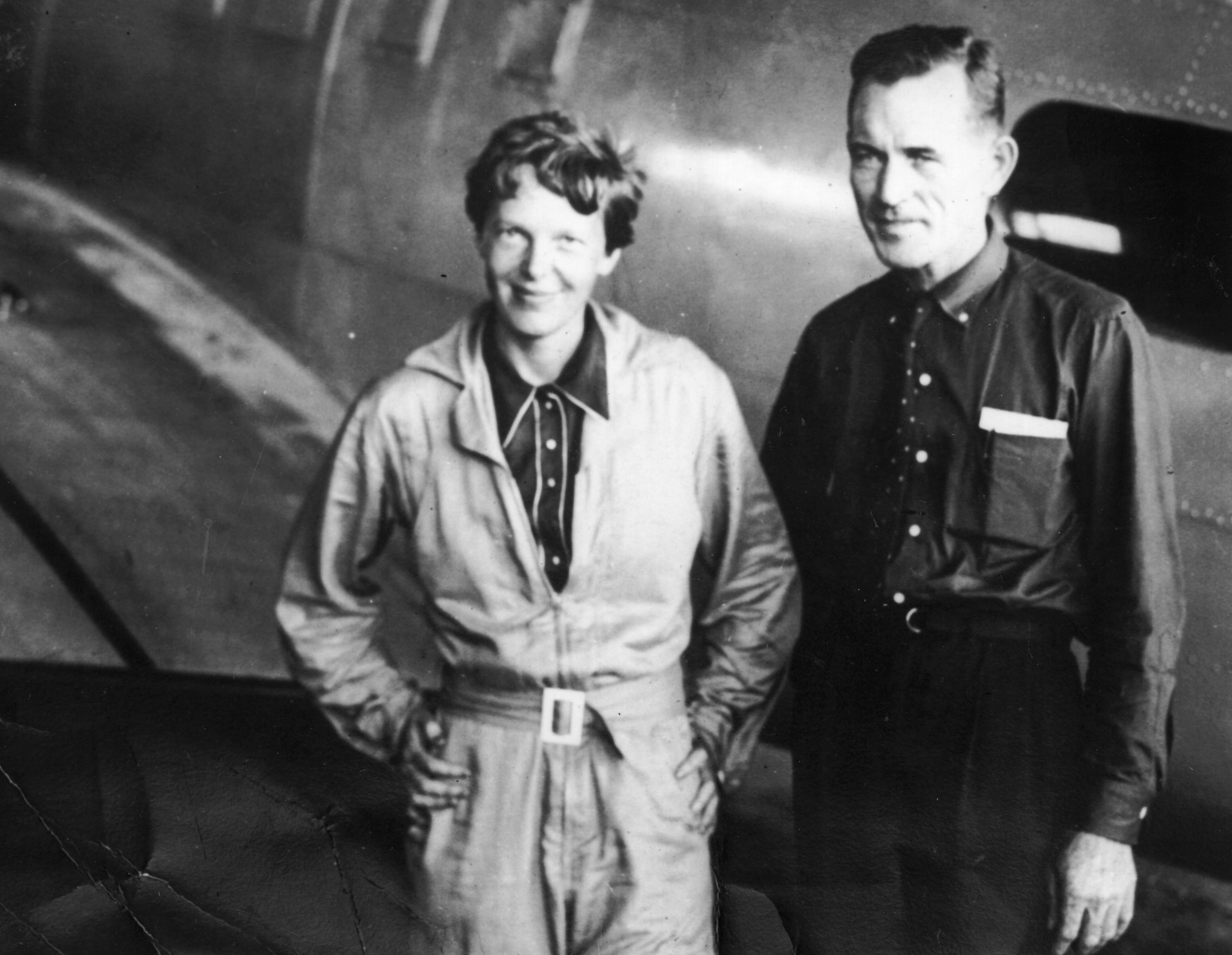
A new History Channel documentary, Amelia Earhart: The Lost Evidence, has prompted new questions about the disappearance of famous aviatrix Amelia Earhart. The documentary unearthed a long-lost photograph that lends credence to the theory that Earhart survived the plane crash that ended her 1937 bid to become the first woman air pilot to circumnavigate the globe, only to die a prisoner of the Japanese, suspected of being a spy.
“This photograph came out of a Navy file, a formerly top-secret file in the National Archives, and it was misfiled. And that was the only reason I found it,” said retired US Treasury Agent Les Kinney in the documentary. He believes that the US government knew that Earhart had been imprisoned, and covered it up.
The image in question, which Kinney discovered in 2012, is being published now for the first time. Identified on the label as “Marshall Islands, Jaluit Atoll, Jaluit Island, Jaluit Harbor,” it shows a small dock, allegedly on a South Pacific Island. Amid a group of natives appear to be two Caucasians, a man standing to face the camera, and what appears to be a woman, sitting with her back to the photographer, looking at the Koshu Maru, a Japanese cargo ship.
Photo of a woman and man believed to be Amelia Earhart and Fred Noonan in the Marshall Islands found in the National Archives by Les Kinney. Courtesy of Les Kinney/National Archives/History Channel.
The exact details of Earhart’s fate have remained a mystery for 80 years. She and navigator Fred Noonan were last heard from during the last leg of their planned 29,000-mile flight. The prevailing theory is that the plane crashed into the sea.
Following Kinney’s find, Shawn Henry, a former executive assistant director of the FBI, took up the investigation, looking into the matter with the History Channel. “This absolutely changes history,” he told People. “I think we proved beyond a reasonable doubt that she survived her flight and was held prisoner by the Japanese on the island of Saipan, where she eventually died.”
According to digital forensic analyst Doug Carner, the photograph is almost certainly authentic and has not been retouched.
In a trailer for the documentary, Henry asked Kinney if he believes the person in the image is Earhart. “That’s right,” Kinney insisted. “If you look at her, you look at the build, the body, the short hair, the fact that she’s a Caucasian…”
He may be onto something, according to facial recognition expert Kent Gibson, who compared the image to known photos of Noonan and Earhart, and believes the two people in question are “likely” them. The woman, he told People, has the “same prominent, athletic shoulders as Amelia.” Based on the known length of the Koshu Maru, Gibson also calculated the length of an airplane seen next to the ship—38 feet, the same as Earhart’s Lockheed Electra.
Amelia Earhart (right) and the alleged photograph of her in the Marshall Islands (left) found in the National Archives by Les Kinney.
Courtesy of Les Kinney/National Archives/History Channel.
If the photograph does depict the doomed duo, it would support what some islanders have been saying all along. During his investigation, Henry interviewed a 90-year-old woman thought to be “the last living eyewitness” to Earhart’s alleged crash on the rocky atoll. “They’re talking about the woman flyer,” she told Henry.
Plane scraps found on the island also matched to the type of metal used in Earhart’s plane.
Despite Henry’s certainty, the Smithsonian National Air and Space Museum’s Aeronautics Department isn’t buying the new photographic evidence. Curator Dorothy Cochrane told People it was a “ridiculous theory,” and that she is “not aware of any missing government records [on Earhart] that could be a game changer.”
Meanwhile, The International Group for Historic Aircraft Recovery’s Earhart Project (TIGHAR) has another theory, which also comes with photographic evidence. They too believe Earhart survived her initial accident but that she landed some 1,330 miles from Jaluit Atoll, on the uninhabited island of Nikumaroro.
A skeleton found on the island in 1940 was believed not to be Earhart’s because the arms were too long to belong to a woman. According to forensic analysis of photographs of the pilot, however, she had longer than average arms, making her a possible match for the Nikumaroro remains.
Earhart and Noonan’s destination was Howland Island, about 350 miles from Nikumaroro, and 850 from Jaluit.